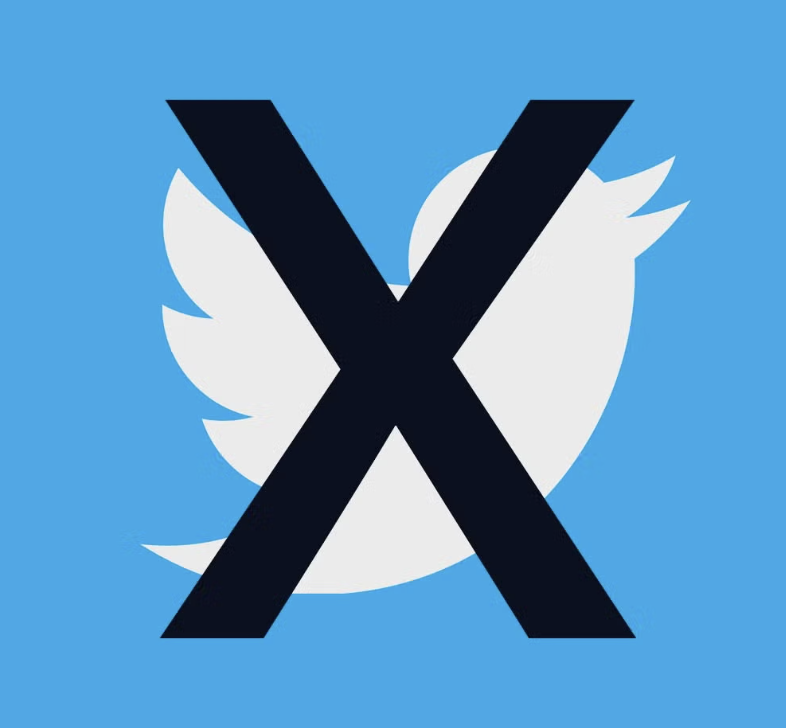Introduction

Live streaming platforms are video hosting solutions that allow users to upload and broadcast video content to their audience. Businesses use streaming video platforms to share videos for the purpose of lead generation, building brand awareness, advertising, and providing paid access to video streaming. Live Streaming has been around as webcasting for years, as more and more demand is made for video, live streaming has matured, and is now integrated and accessed through apps and via social media channels in real time.
This access creates interactive live video portals that make everyone an instant presenter, allowing the broadcaster to take the audience right into the heart of the action with little more than their phone or tablet and maybe a set of headphones. Add in a hashtag to identify niche interest groups, let your audience know you what you are planning though a lead in campaign and hey presto, you and your audience are going live.
Video killed the radio star…but gave CPR to social media
Produced, edited and posted video content continues to capture online users’ attention in a world of 280 characters, photos with filters and six second Snapchats. So this begs the question: Why live streaming? Why not continue to push brands and creators to flood social media platforms with this video content and continue to rake in the big bucks. The answer is actually pretty simple: quantity.
The average adult consumes more than five hours of video a day and more than one hour is on digital devices. However, the number of people and brands creating these videos that everyone is watching is still a small fraction compared to those who are watching. Live Streaming changes all of that. By enabling social media users to create real-time live streams of their daily lives and more, these platforms have removed the stigma that video has to be well produced and edited to be seen, shared and generate revenue.
With live streaming capabilities, anyone can contribute to the already billions of daily views on these sites and thus help them advertise in these videos. Sure, you might not see an ad while the live stream is live, but once it’s over, saved and posted to a Facebook page you better believe it will have an ad roll somewhere. This use of video is adaptive for businesses – everyone is used to seeing this live, raw and authentic style of video, and it is totally normalised even for big brands, bye-bye expensive video shoot.
Who are the players and the platforms?

Meta, Facebook and Instagram Reels
Meta former COO Sheryl Sandberg said that in 5 years Facebook will be totally video. That was so a decade ago, and here we are, all video everywhere. Facebook’s live streaming service is all about their business facing developments, and is designed as a killer marketing tool that allows you to connect with your customers in a raw and real way. By establishing an easy to find and use “Go Live” button on new posts, Snapchat-style live functions, and the ability to save what’s streamed for all time, Facebook Live has combined all the best of other social media networks and brought it to its more than one billion users in one place. Meta, as the parent company of Facebook and Instagram, no wonder that Insta is totally on board with the livestream via its Reels platform. Its live stream is very similar to how Facebook’s works and can be done as part of Instagram Stories, or in your feed. These are less for breaking news, more for breaking views and captivating your audience with some real time real life insights.

X Live Streaming
X (formerly Twitter) is reviving its live streaming capacity (formerly Periscope) using a subscription model. This is currently (2023) being recoded and launched, more information as it evolves. X provides its revenue through subscriptions in Creator Subscriptions. It lets you provide exclusive content to paying subscribers with the following eligibility requirements:
- You must be 18 years or older.
- You have at least 500 followers.
- Your account should be active in the past 30 days.
Meet these criteria, and the app will let you register via the Subscriptions section. It’s under the Monetization tab of the main menu. Once X approves your application, you can charge $2.99, $4.99, or $9.99 monthly to provide the following types of exclusive content:
- Exclusive tweets only your subscribers can see.
- Subscriber badges let your members show they are your members.
- Subscriber Tab helps you monitor content and members, but it is only available on iOS.
- Subscription links allow you to invite more subscribers conveniently.
- Subscriber-only Spaces are live conversations for paying followers only.
This is the likely way that livestreaming will work using X.

YouTube Live
The birthplace of video, YouTube has continued its quest to bring video of all kinds to its more than one billion users. With YouTube Live, the company is utilising its expansive creator and advertising network to generate even more video to be hosted and monetised. YouTube makes it incredibly easy to aim, shoot and post. YouTube also streams live TV through a service called Unplugged that broadcasts some network channels and shows. You can find out more about how to livestream on YouTube here.
Social Streaming vs Public Broadcast Streaming
As video has become ubiquitous to business, more and more corporations and events are using a live streaming service to reach their audiences. For these types of events, a Facebook or YouTube platform isn’t secure or scalable enough, and a whole new industry of streaming platforms has arisen.
Today, enterprise video platforms have been built to offer a business streaming experience simply, making it possible to securely or publicly broadcast live video online without expensive investments in either your recording hardware or your network infrastructure. These solutions are designed to deliver video in the same way as does Netflix or YouTube, and are built to be flexible enough that an organization could set everything up to start streaming professional-looking events or communications in as little as a few hours.
Some of the popular platforms for live streaming can be found in the table below, these are put together by Linkedin as the preferred streams for their third party streaming service and offer a range of pricing options.
How to create a livestreaming strategy
Live streaming is bringing one very important factor in its value proposition to businesses: Accessibility. Firstly, it's giving the average online business a way to easily broadcast their story, services and products and thus greatly increase the amount of video on any given platform, which is then monetized. Gone are the super expensive shoots and edits, businesses now have permission to point, shoot and upload knowing that their customers won’t be judging them on their Oscar nominee production values.
Secondly, the phrase “anytime, anywhere” is truer than ever. Users can watch live broadcasts, whether on their PC or mobile device, in a matter of seconds. This greatly increases their overall time spent watching digital video. So how can you take advantage of the seemingly mass of consumers who will be creating and consuming live video? Create your own live streaming strategy. Your video strategy should harmonise with your social strategy so you are able to use one to promote the other.
Plan for when you will go live, and prepare your topic so you are at ease and clear on your message (unless you are breaking news or doing some spontaneous video, which is totally cool too.) Think about whether your customers would like a series or updates, when they would want to watch, and how long is the right time. Let them know when you are going to broadcast ahead of time, and the type of interaction you are expecting, so they can prepare ahead of time if necessary. As with all things social, consistency of content and brand is the key, as well as responding to what your customers need and want.

How to use mobile livestreaming for business
Audiences and customers now expect to get responses to their tweets and social media messages as soon as possible. So as an arm of customer service, the real-time engagement provided by these livestreaming apps can be very useful for your business. As it is a broadcast medium, the rule of thumb is to think like a follower/viewer rather than as if you were making comment on static social media. Similar to all forms of digital marketing, the best way to use live video streaming is as part of your brand’s suite of story telling.
If you merge together the two adages that video is sticky and a picture tells a thousand words, you can begin to see the power of being able to broadcast in real time all those moment-to-moment joys of your business. In terms of being able to interact with your customers and clients, it is another way of doing a much more agile and visual webinar, as you pick up the interactivity on the comments, and have the action, excitement, ‘right now’ and visuals of live video.
The playbook doesn’t differ significantly to how you engage in a conversation with your customers through your other social media channels. Live Streaming in this context is social, it's conversational, and most importantly it’s very interactive, you can get a live sense of how your customers are experiencing you and your brand, which can then also translate into how you may operate on your other more static social media.
Ask a lot of questions and check in with your audience in these sessions, this is invaluable first person feedback. Here are some startup tips for how best to use live video streaming. Think about your existing digital and social media strategy and how this channel can do some of the heavy lifting in your brand strategy.
- Get customer feedback.
Talk with your customers about their likes and dislikes concerning your business, products and service. What do they want, need and importantly are they using them for the things you think they are! Think of it as having an instant focus group ready and willing to provide you their opinions and insights in real time.
- Show the process behind the screen.
Customers love to know about how you do what you do. Especially in the current day of experiential engagement, what is grist for the mill for you, may be a revelation of entertainment for your biggest fan. Of course don’t be giving away trade secrets, but showing customers what goes into creating your product or delivering your service can go a long way into building not only trust, but also authority. All of which is a strong precursor to sales and brand loyalty.
- Break down the barriers.
Sometimes the brilliance in your product isn’t always simple to understand. Live Streaming is a great way to demo features, or demo new features, or show some tricks and hacks to make your product not only easy to use, but show how it solves the big market problems it was designed to combat. Useful, informative and fun – and more importantly live, so ask your audience what questions they have for you, and what they want to see, and comments on how they are best using your product or service
- Break some news.
Live video is a perfect place to hold your own live media conference – and give front row exclusive access to the audience that supports your business. Journos, PR and others will be able to catch it live or on the replay and get their grabs. One of the real gains from live video is you aren’t reliant on other media to tell your story. Let your fans and their networks spread the word.
- Get creative with your products and services.
Utilise interactivity and create fun competitions, engagement, story sharing and prizes using hashtags and the live stream. Boom! That giveaway just happened and your biggest supporters can be feeling the buzz live in the audience - not because they filled in another website landing page. Keep them coming and keep them guessing, the noise will be deafening online if you do it right.
- Employee of the month.
The people that make your business tick are pretty important to your ongoing growth and success. Here, they can be featured, and even run their own broadcasts, giving your fans and customers a bigger, deeper view of who your business is, and the people that make it so. This is a nice way to reward your staff with acknowledgement and also get in their networks. The more faces that tell your story, the wider the reach.
The best way to really get a handle on how livestreaming can be powerful for your business is to watch some broadcasts and see when the light comes on in your mind as to what the possibilities are for your brand. For corporate businesses, here are some internal and external ideas for using live streaming:
- Live streaming of shareholder reports and announcements
- Company-wide meetings where every employee can attend
- Live streaming of events with special speakers to geographically dispersed teams
- Onboarding, training, and on-the-spot employee support
For external communications, live streaming can be used for:
- Product launches and other events that are preceded by a build-up
- Sharing educational content, be it a how-to, a product demonstration, or a webinar
- Launching exclusive offers that are available only during the live stream
- Community building, with types of content that foster communication
With COVID19 sending everyone indoors, many businesses have had to use live stream for a wide range of uses, both customer and staff facing, making video even more conventional. There are very few businesses that can’t utliise video to connect with their key audiences, and quickly build connections, and conversions.

